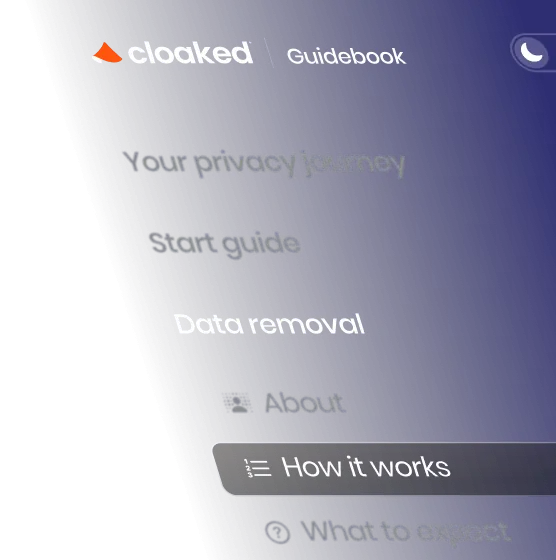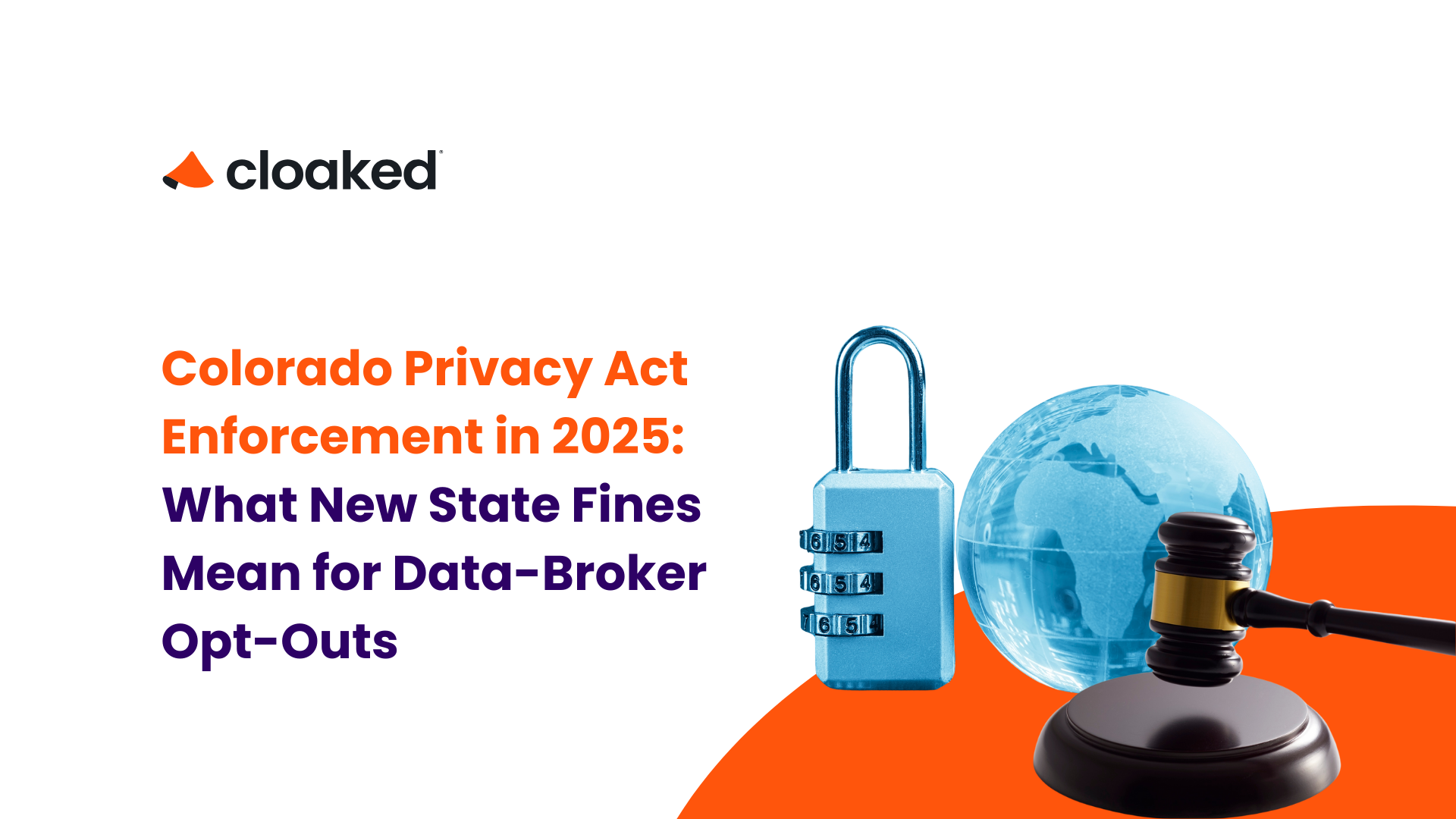Why Delete Act Compliance Can't Wait Until 2026
California's Delete Act compliance deadline is approaching faster than most businesses realize. The Delete Act (Senate Bill 362), signed into law in 2023, requires the California Privacy Protection Agency to establish an accessible deletion mechanism allowing consumers to request deletion of their personal information from all registered data brokers through a single portal.
Starting August 1, 2026, the clock starts ticking. Data brokers must access DROP every 45 days to process deletion requests. This isn't just a recommendation; it's a legal mandate with teeth. The 45-day response window represents a fundamental shift in how businesses must handle consumer data requests, transforming what was once a patchwork of individual broker interactions into a synchronized, state-monitored compliance requirement.
The stakes couldn't be higher for businesses operating in California's data ecosystem. Missing the 45-day deadline triggers automatic penalties that compound daily. For organizations still relying on manual processes or fragmented deletion systems, the path to compliance requires immediate action - not in 2026, but today.
A Month-by-Month Timeline: SB 362 Milestones Through 2028
Understanding the Delete Act's implementation timeline is crucial for planning your compliance strategy. The journey from legislation to full enforcement spans multiple years, with critical checkpoints that businesses must navigate.
January 31, 2024 marked the first major deadline: the registration requirement for businesses qualifying as data brokers based on 2023 activities. This initial wave set the stage for what's coming.
The California Privacy Protection Agency has been laying groundwork throughout 2025. Formal rulemaking commenced on March 7, 2025, with the notice of proposed regulations published on April 25, 2025. Modifications to these regulations were noticed on July 31, 2025, closing the public comment period on August 18, 2025.
Looking ahead, January 1, 2026 represents the pivotal moment when the CPPA must establish the accessible deletion mechanism - the Delete Request and Opt-out Platform (DROP). Six months later, August 1, 2026, data brokers begin their mandatory 45-day processing cycles.
The compliance requirements don't end there. Beginning January 1, 2028, and every three years thereafter, data brokers must undergo independent third-party audits to determine compliance with the Delete Act. These audits add another layer of accountability, ensuring that the 45-day processing window becomes embedded in standard business operations.
Mapping Cloaked's 30–45-Day Automation to the Law's 45-Day Window
While others scramble to build compliance infrastructure, Cloaked already operates on the exact timeline the Delete Act demands. The platform scans databases of data brokers across the web for personal information including names, phone numbers, and addresses - completing its automated cycle within 30 to 45 days.
This isn't coincidental alignment; it's purposeful design. The platform maintains audit-ready logs of every request, timestamps, responses, and outcomes, persisting follow-ups to non-responding brokers. When DROP launches, users won't need to change their workflows; they're already compliant.
The automation advantage becomes clear when you consider the alternative. Research shows that manual processing costs about $800K per million consumer identities annually. With the Delete Act's 45-day cycles, that cost multiplies as organizations must process requests eight times per year, every year.
Inside the Compliance Dashboard: Screenshots & Escalations
Modern compliance demands more than spreadsheets and email trails. Leading platforms now provide unified interfaces that track deletion requests from initiation through completion, offering real-time visibility into compliance status.
These dashboards serve as command centers for Delete Act compliance. Organizations can monitor, assess, and remediate gaps in compliance controls from a single view. When a broker fails to respond within required timeframes, automated escalation protocols kick in, documenting non-compliance for potential CPPA complaints.
The most effective compliance dashboards include customizable data visualizations that highlight critical compliance activities. Case management features allow teams to quickly investigate potential violations, respond to issues, and document resolution - all within the platform. This integrated approach proves essential when defending against regulatory inquiries or demonstrating good-faith compliance efforts.
DROP vs. Cloaked: Broker Coverage Gaps You Need to Know
The Delete Request and Opt-out Platform promises comprehensive coverage, but reality reveals important gaps. DROP lets you send requests to 500+ registered data brokers - an impressive number until you consider the broader ecosystem.
DROP's reach is limited to California-registered brokers. Meanwhile, personal information flows through countless unregistered entities, offshore brokers, and companies that may claim exemptions. DROP sends a single request to registered brokers, but what about the rest?
This is where third-party services fill critical gaps. Cloaked currently covers 140+ brokers, including many that may never appear in DROP's registry. The platform doesn't just send deletion requests; it verifies compliance, documents responses, and maintains persistent follow-up protocols that go beyond DROP's statutory requirements.
Why Waiting for DROP Could Cost You Two Years of Exposure
Every day you wait compounds privacy risk. The 246% increase in deletion requests from 2021 to 2023 reflects growing consumer awareness about data exposure. Meanwhile, fraud losses continue climbing - people reported losing over $12 billion to fraud in 2024, up from $10 billion in 2023.
These aren't abstract statistics. "During 2024, Sentinel received 6.5 million" consumer reports spanning 29 categories of fraud and identity theft. The median loss sits at $497 per incident, but the time cost proves equally devastating. Fraud resolution hours jumped from six hours in 2022 to nearly 10 hours in 2023.
Starting data removal today through automated services provides immediate protection while positioning you for seamless DROP integration in 2026. Organizations using automated platforms gain two years of deletion cycles, audit trails, and compliance documentation before DROP even launches.
Pre-2026 Compliance Checklist & 45-Day Gantt Chart
Successful Delete Act compliance requires coordinated action across legal, IT, and privacy teams. Here's your roadmap to readiness:
First, establish your baseline. The CPPA estimates that 250,000 consumers will utilize DROP upon initial rollout, growing to one million in subsequent years. Your systems must handle this scale while maintaining the 45-day processing window.
Next, prepare for registration. Starting in 2026, data brokers must first create a business account in DROP before completing registration and paying the annual fee by January 31. This integration requirement means your deletion infrastructure must interface seamlessly with state systems.
Document everything meticulously. Cloaked maintains audit-ready logs that demonstrate compliance timing, broker responses, and resolution status. These records prove invaluable during audits or enforcement actions.
Build escalation protocols now. When brokers fail to respond within required timeframes, your system must automatically document non-compliance, trigger follow-ups, and prepare evidence for potential CPPA complaints. Manual tracking won't scale to meet DROP's demands.
Documenting Broker Non-Compliance for CPPA Complaints
The Delete Act's enforcement mechanism transforms consumer complaints into costly penalties. Businesses must respond to deletion requests no later than 45 calendar days after receipt. Failure triggers immediate liability.
The penalty structure is unforgiving: $200 per day for registration failures, plus $200 per deletion request for each day a broker fails to delete consumer information. These fines compound quickly - a single non-compliant broker could face tens of thousands in penalties within weeks.
Documentation becomes your shield against liability. The CPPA recently fined National Public Data $46,000 - the maximum penalty under current law - for failing to comply with registration requirements. This enforcement action signals the agency's commitment to aggressive prosecution.
As CPPA's head of enforcement stated: "Californians have a right to know who is trafficking in their personal information. That's why California law requires data brokers to register." The agency's investigative sweep demonstrates that compliance isn't optional; it's mandatory and monitored.
The regulations require a 100% match threshold for deletion requests, eliminating the previous 50% matching standard. This stricter requirement demands precise record-keeping and verification processes that manual systems struggle to maintain.
Get 2026-Ready in 2024: Why Cloaked Users Sleep Easier
The path to Delete Act compliance starts today, not in 2026. While others wait for DROP's launch, Cloaked users already operate within the law's 45-day framework, building compliance muscle memory that will prove invaluable when enforcement begins.
Cloaked's automation doesn't just match DROP's requirements; it exceeds them. The platform scans databases across the web, maintains persistent follow-ups, and documents every interaction. When DROP launches on January 1, 2026, Cloaked users will transition seamlessly, armed with two years of deletion history and proven workflows.
The urgency cannot be overstated. With fraud losses exceeding $12 billion annually and data brokers multiplying exponentially, waiting for government solutions leaves you exposed. Cloaked provides immediate protection while positioning you perfectly for DROP integration.
Don't let 2026 catch you unprepared. The Delete Act's 45-day compliance window demands automated solutions, comprehensive broker coverage, and audit-ready documentation - capabilities Cloaked delivers today. Visit cloaked.com to start your compliance journey before the clock starts ticking.
California Delete Act & DROP Compliance FAQ (2025–2026)
Frequently Asked Questions
The California Privacy Protection Agency (CPPA) must launch the Delete Request and Opt-Out Platform (DROP) by January 1, 2026. Starting August 1, 2026, registered data brokers must log in every 45 days to process deletion requests and maintain compliance with the law.
Cloaked automates full data-removal workflows within
30–45 days, mirroring the Delete Act's cadence. It maintains
audit-ready logs, timestamps, and persistent follow-ups, ensuring that today’s automation process is already compliant with upcoming DROP requirements in 2026.
Not entirely. DROP will only include
California-registered brokers, leaving out
unregistered and offshore entities.
Cloaked extends beyond that scope with coverage across
140+ brokers, tracking confirmations and deletions for a more comprehensive approach.
Brokers face fines of $200 per day for failing to register and $200 per deletion request per day if they fail to act. Maintain detailed logs, timestamps, and escalation evidence. Recent CPPA enforcement (like the National Public Data fine) shows the agency prioritizes brokers that ignore deletion obligations.
Prepare now by:
- Forecasting deletion request volumes.
- Creating your DROP business account and registering annually by January 31.
- Building automated deletion workflows and audit-ready logs.
- Establishing escalation protocols for unresponsive brokers.
These steps ensure smooth onboarding when DROP becomes mandatory in 2026.
The Delete Act requires brokers to confirm a
100% identity match before deleting data, replacing the older
50% match threshold. This means precise identifiers are mandatory—manual processes often fail here, while
Cloaked’s automation keeps records synchronized and verifiable across brokers.


















